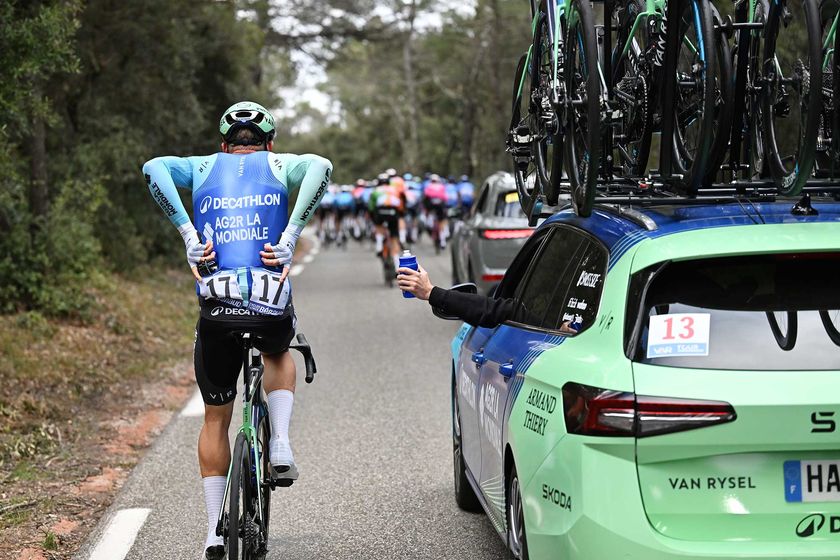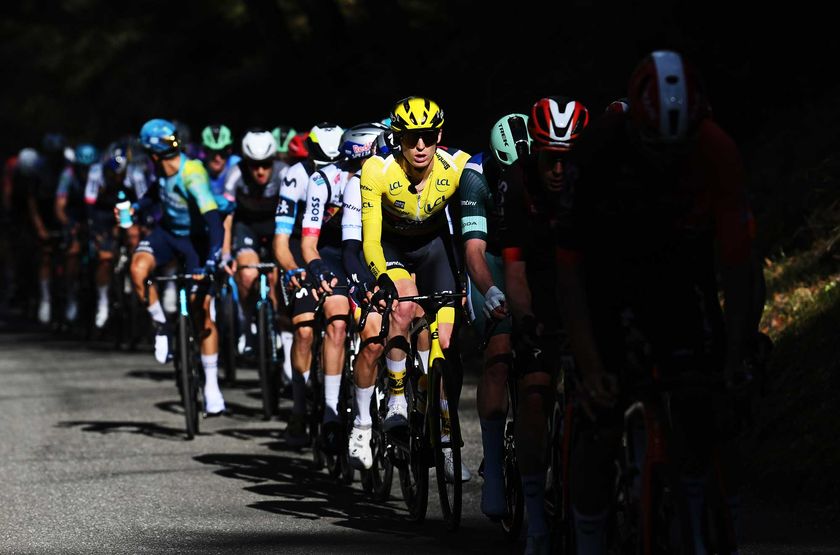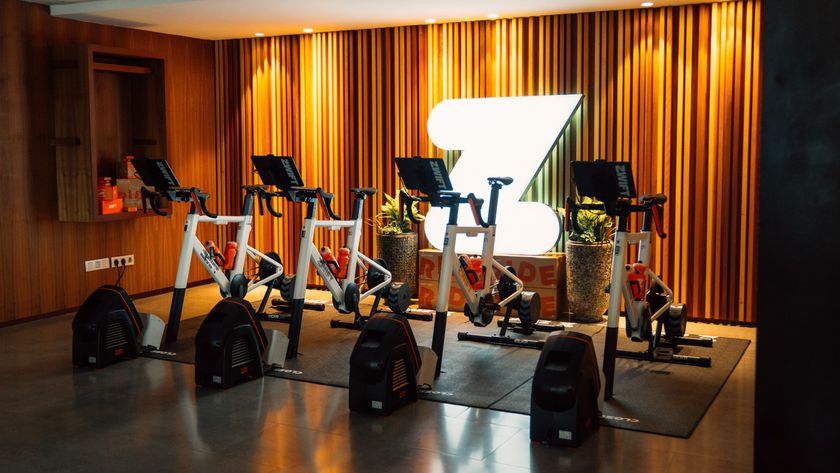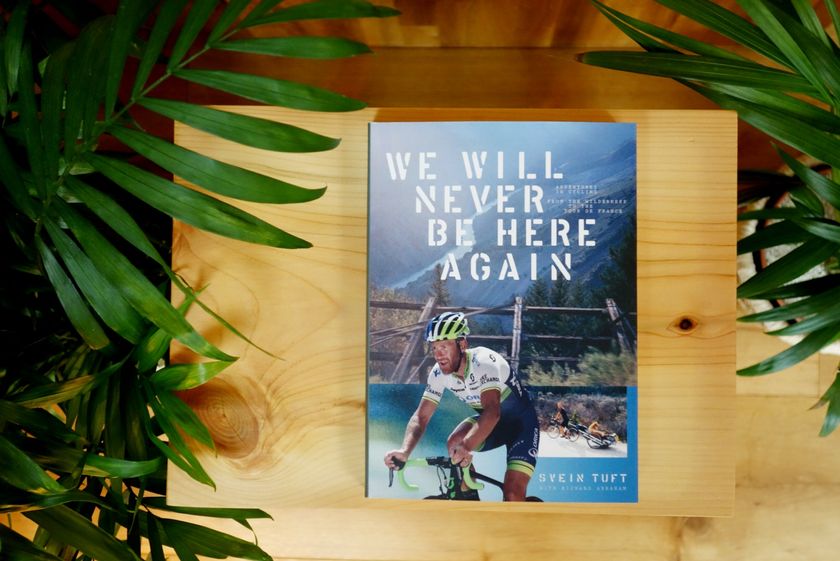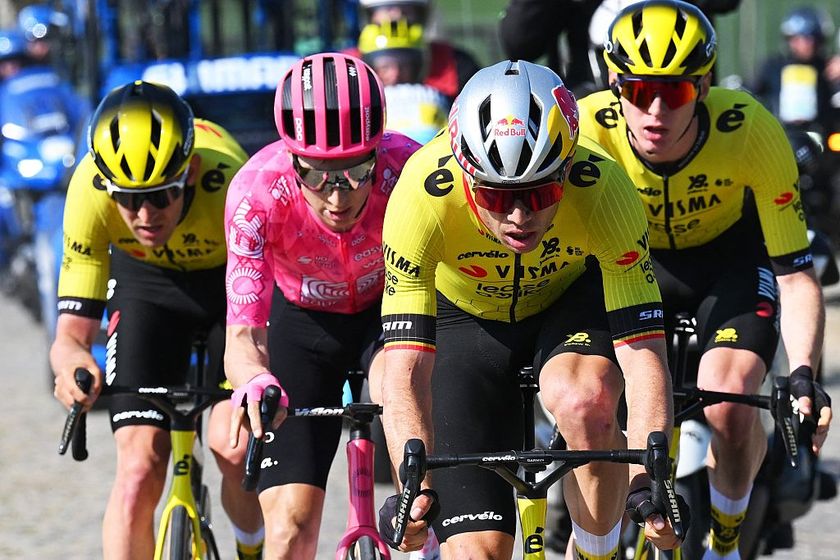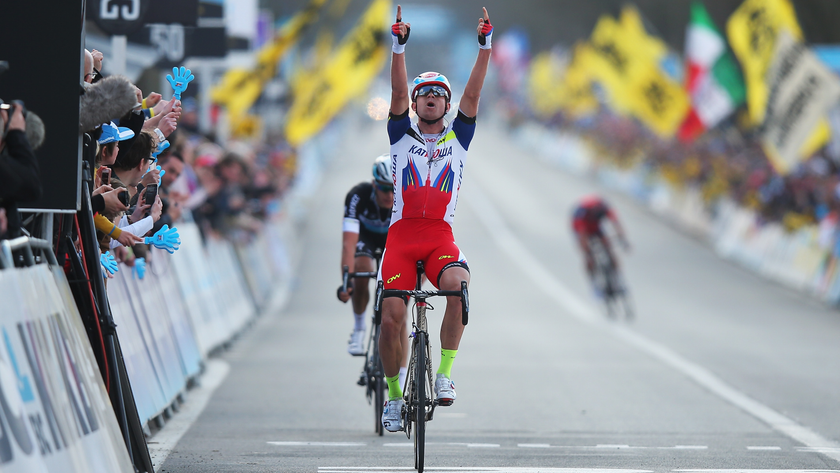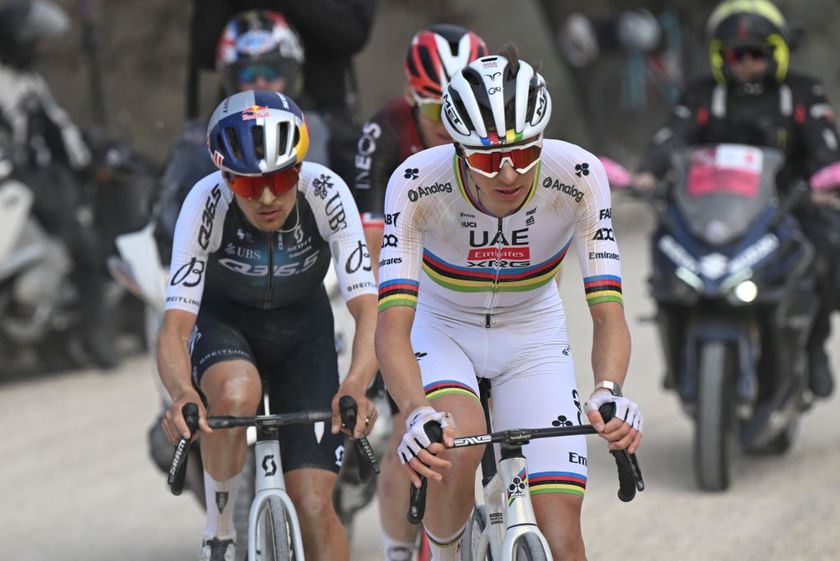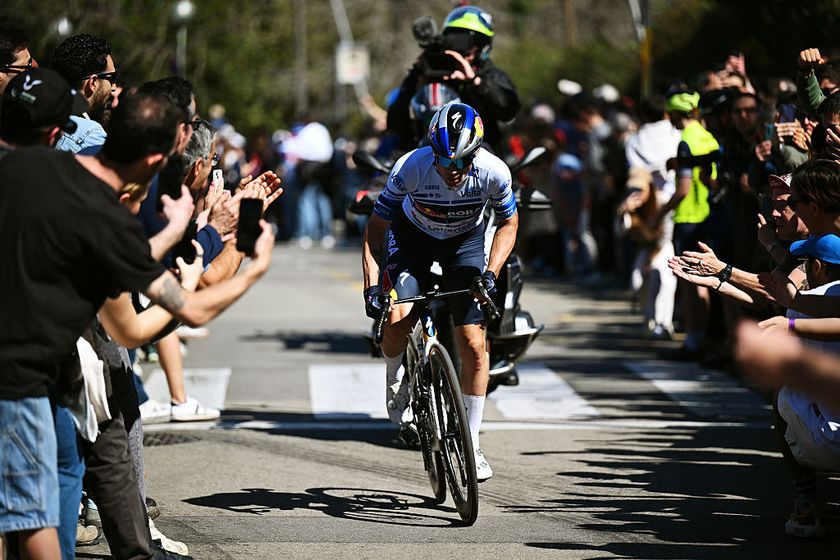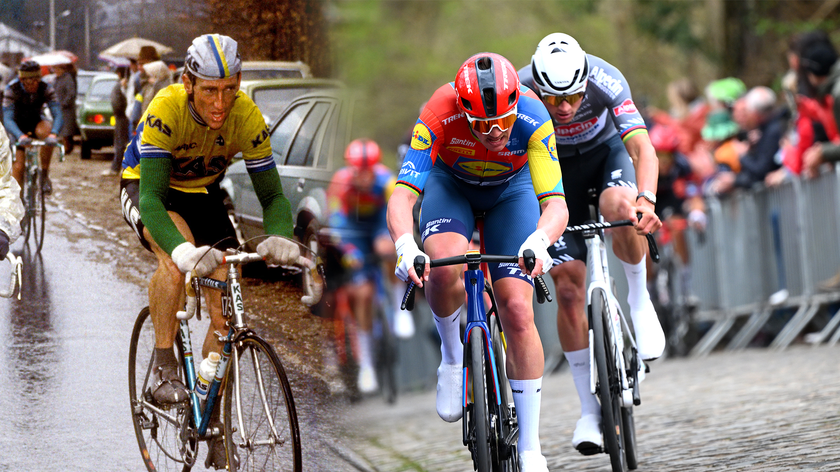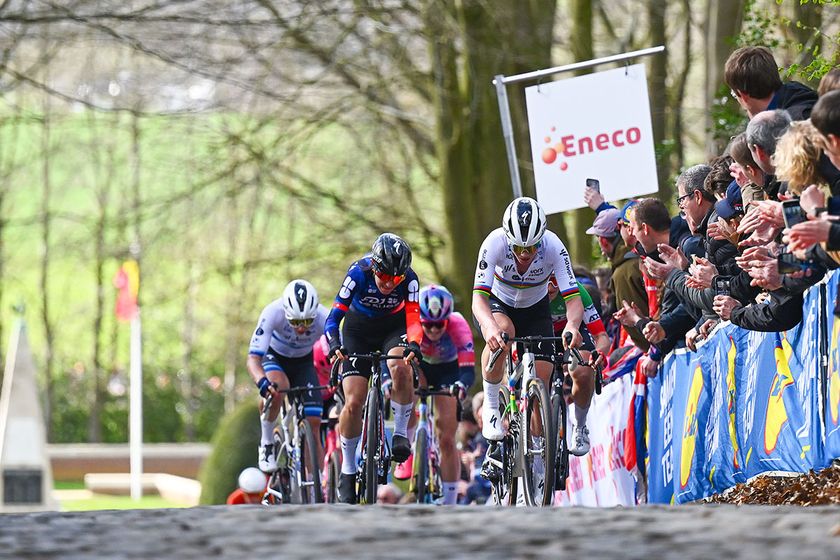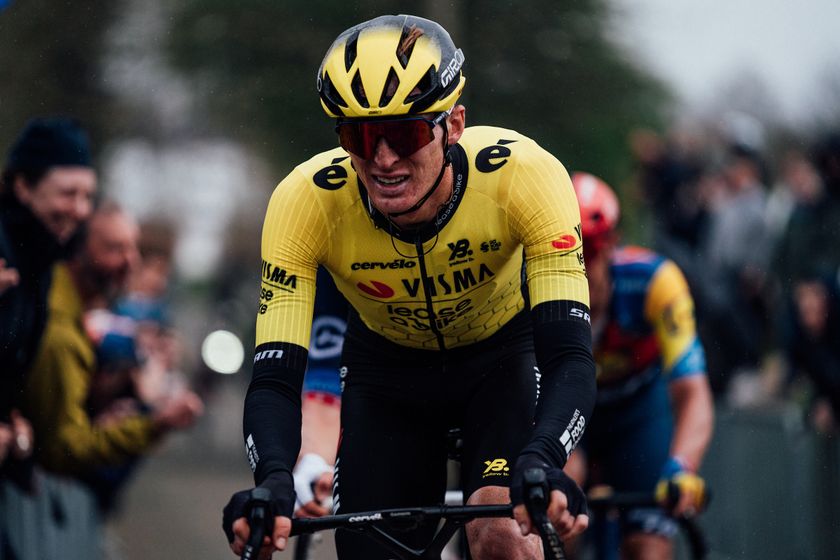Fitness questions and answers for February 11, 2009
Got a question about fitness, training, recovery from injury or a related subject? Drop us a line at...
Form & Fitness Q & A
Got a question about fitness, training, recovery from injury or a related subject? Drop us a line at fitness@cyclingnews.com. Please include as much information about yourself as possible, including your age, sex, and type of racing or riding. Due to the volume of questions we receive, we regret that we are unable to answer them all.
Carrie Cheadle, MA (www.carriecheadle.com) is a Sports Psychology consultant who has dedicated her career to helping athletes of all ages and abilities perform to their potential. Carrie specialises in working with cyclists, in disciplines ranging from track racing to mountain biking. She holds a bachelors degree in Psychology from Sonoma State University as well as a masters degree in Sport Psychology from John F. Kennedy University.
Jon Heidemann (www.peaktopeaktraining.com) is a USAC Elite Certified cycling coach with a BA in Health Sciences from the University of Wyoming. The 2001 Masters National Road Champion has competed at the Elite level nationally and internationally for over 14 years. As co-owner of Peak to Peak Training Systems, Jon has helped athletes of all ages earn over 84 podium medals at National & World Championship events during the past 8 years.
Dave Palese (www.davepalese.com) is a USA Cycling licensed coach and masters' class road racer with 16 years' race experience. He coaches racers and riders of all abilities from his home in southern Maine, USA, where he lives with his wife Sheryl, daughter Molly, and two cats, Miranda and Mu-Mu.
Kelby Bethards, MD received a Bachelor of Science in Electrical Engineering from Iowa State University (1994) before obtaining an M.D. from the University of Iowa College of Medicine in 2000. Has been a racing cyclist 'on and off' for 20 years, and when time allows, he races Cat 3 and 35+. He is a team physician for two local Ft Collins, CO, teams, and currently works Family Practice in multiple settings: rural, urgent care, inpatient and the like.
Fiona Lockhart (www.trainright.com) is a USA Cycling Expert Coach, and holds certifications from USA Weightlifting (Sports Performance Coach), the National Strength and Conditioning Association (Certified Strength and Conditioning Coach), and the National Academy for Sports Nutrition (Primary Sports Nutritionist). She is the Sports Science Editor for Carmichael Training Systems, and has been working in the strength and conditioning and endurance sports fields for over 10 years; she's also a competitive mountain biker.
Eddie Monnier (www.velo-fit.com) is a USA Cycling certified Elite Coach and a Category II racer. He holds undergraduate degrees in anthropology (with departmental honors) and philosophy from Emory University and an MBA from The Wharton School of Business.
Get The Leadout Newsletter
The latest race content, interviews, features, reviews and expert buying guides, direct to your inbox!
Eddie is a proponent of training with power. He coaches cyclists (track, road and mountain bike) of all abilities and with wide ranging goals (with and without power meters). He uses internet tools to coach riders from any geography.
David Fleckenstein, MPT (www.physiopt.com) is a physical therapist practicing in Boise, ID. His clients have included World and U.S. champions, Olympic athletes and numerous professional athletes. He received his B.S. in Biology/Genetics from Penn State and his Master's degree in Physical Therapy from Emory University. He specializes in manual medicine treatment and specific retraining of spine and joint stabilization musculature. He is a former Cat I road racer and Expert mountain biker.
Since 1986 Steve Hogg (www.cyclefitcentre.com) has owned and operated Pedal Pushers, a cycle shop specialising in rider positioning and custom bicycles. In that time he has positioned riders from all cycling disciplines and of all levels of ability with every concievable cycling problem. Clients range from recreational riders and riders with disabilities to World and National champions.
Current riders that Steve has positioned include Davitamon-Lotto's Nick Gates, Discovery's Hayden Roulston, National Road Series champion, Jessica Ridder and National and State Time Trial champion, Peter Milostic.
Pamela Hinton has a bachelor's degree in Molecular Biology and a doctoral degree in Nutritional Sciences, both from the University of Wisconsin-Madison. She did postdoctoral training at Cornell University and is now an assistant professor of Nutritional Sciences at the University of Missouri-Columbia where she studies the effects of iron deficiency on adaptations to endurance training and the consequences of exercise-associated changes in menstrual function on bone health.
Pam was an All-American in track while at the UW. She started cycling competitively in 2003 and is the defending Missouri State Road Champion. Pam writes a nutrition column for Giana Roberge's Team Speed Queen Newsletter.
Dario Fredrick (www.wholeathlete.com) is an exercise physiologist and head coach for Whole Athlete™. He is a former category 1 & semi-pro MTB racer. Dario holds a masters degree in exercise science and a bachelors in sport psychology.
Scott Saifer (www.wenzelcoaching.com) has a Masters Degree in exercise physiology and sports psychology and has personally coached over 300 athletes of all levels in his 10 years of coaching with Wenzel Coaching.
Kendra Wenzel (www.wenzelcoaching.com) is a head coach with Wenzel Coaching with 17 years of racing and coaching experience and is coauthor of the book Bike Racing 101.
Steve Owens (www.coloradopremiertraining.com) is a USA Cycling certified coach, exercise physiologist and owner of Colorado Premier Training. Steve has worked with both the United States Olympic Committee and Guatemalan Olympic Committee as an Exercise Physiologist. He holds a B.S. in Exercise & Sports Science and currently works with multiple national champions, professionals and World Cup level cyclists.
Through his highly customized online training format, Steve and his handpicked team of coaches at Colorado Premier Training work with cyclists and multisport athletes around the world.
Richard Stern (www.cyclecoach.com) is Head Coach of Richard Stern Training, a Level 3 Coach with the Association of British Cycling Coaches, a Sports Scientist, and a writer. He has been professionally coaching cyclists and triathletes since 1998 at all levels from professional to recreational. He is a leading expert in coaching with power output and all power meters. Richard has been a competitive cyclist for 20 years
Andy Bloomer (www.cyclecoach.com) is an Associate Coach and sport scientist with Richard Stern Training. He is a member of the Association of British Cycling Coaches (ABCC) and a member of the British Association of Sport and Exercise Sciences (BASES). In his role as Exercise Physiologist at Staffordshire University Sports Performance Centre, he has conducted physiological testing and offered training and coaching advice to athletes from all sports for the past 4 years. Andy has been a competitive cyclist for many years.
Michael Smartt (www.wholeathlete.com) is an Associate Coach with Whole Athlete™. He holds a Masters degree in exercise physiology, is a USA Cycling Level I (Elite) Coach and is certified by the NSCA (Certified Strength and Conditioning Specialist). Michael has more than 10 years competitive experience, primarily on the road, but also in cross and mountain biking. He is currently focused on coaching road cyclists from Jr. to elite levels, but also advises triathletes and Paralympians. Michael is a strong advocate of training with power and has over 5 years experience with the use and analysis of power meters. Michael also spent the 2007 season as the Team Coach for the Value Act Capital Women's Cycling Team.
Earl Zimmermann (www.wenzelcoaching.com) has over 12 years of racing experience and is a USA Cycling Level II Coach. He brings a wealth of personal competitive experience to his clients. He coaches athletes from beginner to elite in various disciplines including road and track cycling, running and triathlon.
Advice presented in Cyclingnews' fitness pages is provided for educational purposes only and is not intended to be specific advice for individual athletes. If you follow the educational information found on Cyclingnews, you do so at your own risk. You should consult with your physician before beginning any exercise program.
The right bars
Donating blood
Pelvic feedback
Heart rate
Pressure on shoulders
Bike frame sizing
Mid-foot cleat positioning
The right bars
I have read nearly every article you have written on the internet. I also read the form and fitness section on Cyclingnews as they come out.
Over the past four months I have adopted your ideas into my road bike fit. I pretty much did it all on my own and feel pretty confident in my application of your guidelines. I found that I had to make the adjustments over a long period of time in order to take advantage of maximising the limits. I moved to this much too quickly and it caused me problems. All this said, I am down to what I hope will be my last hurdle. My last challenge is to get myself into the correct handlebar.
I am 5'9" riding a 54cm Cervelo Soloist. I am currently using a 90mm stem. I have not been able to ride in the drops comfortably since I started racing in 1993. I am using a Deda Newton deep drop bar with some sort of anatomic bend. I am able to pass the balance test of having my hands next to the drops; however, I am still not comfortable in the drops. I went to a 70mm stem and could ride in the drops comfortably; however, I lost my leverage at the hoods on steep hills because the stem is so short. so I am back to the 90mm stem.
If I raise the front end then I will be sitting way too high due to the fact that I am not very limbre. I am one of those guys who can only lean over and touch my shins [two brothers and dad are the same way]. That said, I am very comfortable on the hoods. I read where you are partial to the FSA compact [shallow] handlebars. The Deda Newton reach is 86mm and the drop is 142mm. If I go to one of the compact FSA bars the reach is 78-80mm with a drop of 125mm and a four-degree outward bend.
I believe I would be much more comfortable with a shallow set up however I am concerned that I will have wrist interference or a leverage problem during a sprint. I pack a strong sprint and am not willing to sacrifice any of my sprint for comfort. FSA allows me to stay near my current reach of 86mm. If there is another bar to consider please elaborate. Any thoughts? The information you provide the public is invaluable. Thanks for any help you can provide.
Andy Lougher
USA
Kelby Bethards replies:
This isn't exactly up my alley. Well, maybe it is, I don't know. I had been looking for a short shallow bar for a while. Then I decided to try FSA compacts you speak of. They are nice bars. They alleviate the wrist interference problem, for me at least, by having the bend into the drops start a little bit earlier, on the transition from tops to drops, than a bar with a "classic" bend.
Steve Hogg replies:
Just to add to Kelby's insightful comments...
Another bar that you should consider is the 3T Ergosum. The drop is 128mm, so significantly shallower than your Deda Anatomic but has the same reach at 86mm. With that bar, as well as the two that Kelby mentioned, you may need to use a longer stem. The Dedas have a fixed, semi vertical grip section with a sharp curve at the bottom where the bar projects rearwards. The semi vertical grip section is forces your hand into the same semi-vertical orientation to grip it.
Donating blood
Can you explain the physical effects of donating blood on a person who regularly trains & races approx 400km per week? Including what are the immediate effects, how long it may take to recover & what can be done to assist in recovery? Thank you.
Jeff Gray
Wollongong, NSW, Australia
Scott Saifer replies:
It's great that you are considering donating blood. According to the American Red Cross, each unit (1/2 litre or pint) of donated blood can save up to three lives and yet less than five percent of people ever donate and less than three percent ever donate two or more times. What else can you do where you are guaranteed to be in the top five percent just for entering? (That was really for the other guys who hadn't been thinking about donating).
Pelvic feedback
I am a 45-year-old touring cyclist who has been managing structural problems for close on 20 years. For the last four years an excellent chiropractor who is also a cyclist has begun to make me understand why I was never destined to wear the maillot jeune. A twisted pelvis, the right side is rotated forward and inwards and the left side is rotated backwards, a previously fractured L4 vertebrae (of which I was completely unaware) and spondylosis. As a consequence, my positional tweaks in search of comfort have had to be minor and gradual. Also finances to buy new equipment plays a part!
However I have now got a new saddle, Specialized Avator Gel and as Steve Hogg has suggested this firmer saddle has allowed me to get some feedback from my pelvic area. On the first ride with the new saddle, initially only my right ischia (sit bone) was noticeable on the saddle. After a couple of hours my left SIJ flared up so I lowered the saddle a few mm and then I could also feel my left ischia on the saddle. As I only had another hour or so of the ride left, I couldn't gauge the long term benefit of this adjustment but the left SIJ problem appeared to lessen.
My question is - should I add to the existing 3mm paper shim in my left shoe (I currently use clips and straps) to even out my pelvis or should I build up the left hand side of the new pristine saddle! Thanks.
Robert Newton
Ellesmere Port, UK
Steve Hogg replies:
What you have told me strongly implies that you are either dropping the right hip, sitting with the right hip forward or both. If as most people do, you protect the right side and sacrifice the left, sitting as you do will cause the left leg to reach further, put posterior pressure on the left sacro iliac joint and challenge the plane of movement of the left leg. Here's a check list:
Heart rate
I'm a 54-year-old male who stands at 178cm and weighs 76kg. I maintain most of my fitness by riding a stationary bike at the gym. I have always been reasonably fit, having done competitive judo and triathlons when I was younger. Since those early days I have frequented the gym 2-3 times a week. My preferred exercise has been spin classes and the stationary bike.
Last year I was in the south of France and Mont Ventoux beckoned. Made it to the top but painfully so (oh and kudos to the one legged man who passed me!). This experience made me realise that I could do more for my fitness level. Presently, I pedal for usually one hour, maintaining an average power output of 170 - 180 watts, with an average heart rate of 162-163 bpm.
Keeping the heart rate at this level is comfortable and if I have any less, it does not feel like I am working out. I usually max out at about 178 bpm and do five 10-second sprints at 450 watts. I'd like to increase my power output to 200 watts for an hour but some of the programs I have seen suggest heart rates that are minimal and I seem to be don't seem to be getting a workout.
The heart rate I am pedalling at (average 162 bpm) is, if I am doing the calculations right, 91 percent. This is too high according to most programs that I have seen. Am I understanding the heart rate theory or am I doing something wrong? Given my age and present fitness what can I do to reach my goal of 200 watts for an hour through primarily the gym, as I am usually on time constraints?
Luc Presseau
PS - Lance Armstrong's comeback should be celebrated and analysed from the age perspective as not too long ago 37 would have been seen as way too old.
Scott Saifer replies:
Your feeling that the zone that is called the "right" zone is too easy is common, but incorrect. To increase aerobic power you need to do aerobic training, and the "real workout" feeling you are talking about generally kicks in when one is on the edge of being anaerobic. When I have people ride strictly below 80 percent of maximum heart rate, they feel they aren't working out for a few weeks, but by the end of three weeks their speed and power in that zone are beginning to rise.
Pressure on shoulders
Hello, I am a 26-year-old road race rider who used to be a cat 1. I haven't raced in three years and have recently returned to the sport that I love about a year ago. For the first five months after initially returning I just rode for fun, getting back into the swing of riding my bike regularly. I caught the bug badly again and began training properly in September '08 with a view to competing in 2009. Over the winter I have mainly been doing tempo sort of workouts of roughly two hours in duration but will be bringing in some higher intensity training around March.
I am 6'4" tall and currently weigh in the region of 94kg.
My question really is to Steve Hogg and it is one I'm sure he has answered many times. Basically when I'm riding I have far too much weight on my hands and consequently my triceps really begin to ache after only about 15-20 minutes or so. This is to the extent that when I finish my rides they are so fatigued they feel like pulsating rocks. I didn't used to have this problem when I was racing but back then I was a comparatively paltry 76kg in relation to my current weight.
I'm pretty sure that this weight gain is the main root of the problem but please understand that in the years I wasn't cycling I hit the gym pretty hard and most of the weight gain is down to increased muscle mass, especially in the upper body.
I have been through the archives of this fitness section and have found many of Steve's replies to similar problems and have adjusted my bike fit in all the ways that he suggests to stop this sort of problem. I have moved the saddle back as far as I can (I have an FSA 32.5mm set back post with a Selle SMP saddle giving me a maximum nose of saddle behind bottom bracket measurement of about 145mm), I have moved my cleats back on my shoes, I have raised the bars, shortened the reach but all to no avail and I still seem to get the same ache.
This aching does seem less when I'm pushing the power more and seems more intense if for example I'm doing an easy recovery ride.
Is it a position issue? Do you have any suggestions on this? Is it because my back is too weak to support my heavier body? Are there any exercises you particularly recommend to combat this?
Any help would be very much appreciated - I'm really puzzled by this and its taking a bit of the enjoyment out of the sport that I love. Many thanks.
Seth Kay
United Kingdom
Steve Hogg replies:
At 145mm behind the bottom bracket it is up there, which makes it unlikely that your seat isn't far enough back. Statistically, it's likely that it may be too far back. The culprit is likely to be lack of ability to stabilise yourself easily. I've noticed that a lot of cyclists who hit the gym at some stage improve their muscular strength but not their typically poor ability to stabilise themselves on a bike. So greater mass and strength puts greater stress on their unimproved poor stability patterns. If they don't possess the requisite dynamic core strength, the only mechanism left is to use the shoulder complex and arms and this may be your problem.
Bike frame sizing
I am a 53-year-old male who rides for fitness and recreation. My question is regarding how a different size frame might affect my bike fit.
I have a size 54 Specialized Roubaix. It has a 548mm top tube length and a 165mm head tube length. I had a fitting when I bought it, and after setting saddle height and setback, they swapped out the six degree, 100mm stem for a 6 degree 110mm stem.
After one season and 2500 miles, I have been very pleased with the bike and the fitting. I would like a second bike with a little quicker handling, and am interested in a Specialized Tarmac. A size 54 Tarmac also has a 548mm top tube length but a shorter 145mm head tube length. The bike shop recommends getting a size 56 Tarmac, with a 565mm top tube length but a taller 170mm head tube length.
Their logic is that I won't need too many spacers or too steep an angle on the stem (carbon steerer) to get the same handlebar height, and can adjust by using a shorter (100mm) stem to adjust the reach. While the measurements may work out the same, will this affect the handling of bike versus getting a size 54?
Trevor
Connecticut,USA
Steve Hogg replies:
There is a bit more to your question than what you outline. In effect you want to know what the implications for steering stability are if you duplicate your existing position on a 54cm Roubaix on either option of a 54 Tarmac or a 56 Tarmac as you would prefer a quicker feel to the steering.
Mid-foot cleat positioning
I've just bought a new Shimano shoes and Look KEO pedals so I can alternate between my Sidis with Speedplays [that have baseplate extenders]. My question about the Look pedals are; do they offer cleats that allows me to put my pedal spindle at mid-foot position as you suggest or should I look for a brand of shoes that has an option for mid-foot cleat pos. [if there's one] or am I stuck with the Speedplays? I did a 35-mile ride with the Look pedals with the cleats all the way to the back just to gave it a try [seatpost adjusted of course] but it killed me halfway through the ride [quads were toasted]. Thanks in advance for any advice.
Charles
Philippines
Steve Hogg replies:
There is no adaptor that I am aware of that will allow you to mount a Keo cleat (or any other type of cleat for that matter) in a true mid-foot position on a conventional shoe with cleat mounting holes positioned on the underside of the forefoot. If you want to try mid-foot you will need a pair of Biomac shoes that are designed for this cleat position. Alternately, you can contact any of the custom shoe manufacturers and see what they can offer you.
